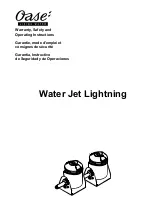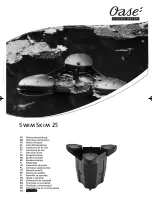
Copyright 2022 Baker Hughes Company.
10 | UNIK 5*00 Series–English
present a clean regulated DC supply to the sensor. The monitoring equipment should likewise be
immune from the effects of electromagnetic disturbances and not impart disruptive signals on the
connections to the sensor.
3.7.2 Cable Type
Due to the small size of the sensors they are unlikely to be directly affected by radiated RF
energy. Any RF energy that gets into the circuits will probably enter via the interconnecting cable.
To minimize the effect of nearby circuits and events, it is necessary to use screened cable
between the sensors and power supply/monitoring equipment. Failure to do so will invalidate the
EMC tests conducted by “Druck”.
The choice of cable type should reflect the environment through which it is going to run. Screened
cable should always be used where electrical noise is present. Good cabling practice will be
reflected in signal quality.
3.7.3 Earthing (Grounding)
For the screening of the cable to be effective, it is essential that the screen or drain conductor is
permanently bonded to earth (ground). This should take place at the monitoring end of the cable
as close to the power supply as practical. Protection should be afforded to any unscreened
section of cable or circuit by means of a screened enclosure. Take care not to create ground
loops.
3.8 Faults
•
Establish if the pressure sensor is mounted, sealed, connected and programmed correctly
as instructed.
•
Contact the manufacturer for further advice on fault elimination.
•
For persistent faults, safely remove the equipment from service. Refer to Section
3.6 for
returned goods procedure.
WARNING
Risk of injury to personnel and damage to property and the
environment. In the event of a fault:



































